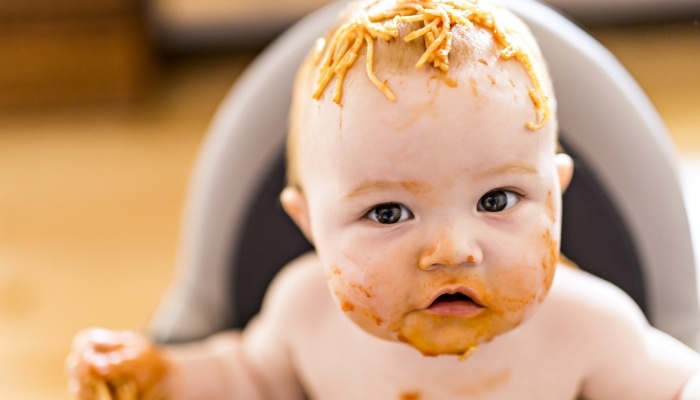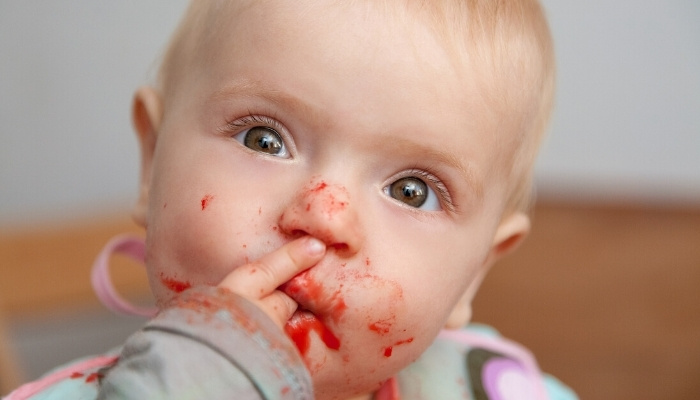It is a common societal expectation for parents to have the knowledge and ability to make the best decisions for their children, even when faced with contradictory information.
When it comes to feeding and nutrition many parents, pediatricians, and early childhood experts agree that baby-led weaning is a beneficial method.
Why is baby-led weaning good? Baby-led weaning is good because it encourages independence, fosters motor skills, promotes a healthy appetite, and facilitates family inclusion. However, this method shouldn’t be utilized with infants under six months old, those with underlying conditions, or those with no interest in eating.
Keep reading to learn more about the benefits of baby-led weaning, how to implement it, and what to avoid.
Baby-Led Weaning Explained
Understanding the basics of baby-led weaning can help you decide what’s best for your child and family. Here’s everything you need to know about BLW.
What Is BLW?
Baby-led weaning is when parents allow their children to take the lead at mealtimes. This is facilitated by encouraging the child to feed themselves and skipping pureed baby food in favor of solid squishable foods.
Benefits of Baby-Led Weaning
There are several benefits to baby-led weaning. Here are a few ways you can expect BLW to impact you and your baby’s life.
- Affordability: Instead of buying packaged name-brand baby foods, parents can serve whatever they’re having for dinner, which often means larger portions of warm food for your little one.
- Skill Development: Baby-led weaning encourages the development of motor skills. Babies get to practice milestones, such as mastering the pincer grasp, at an earlier age.
- Independence: Baby-led weaning is a lot of fun for your little one. They get to play with their food, get messy, explore new flavors, and try new textures.
- Nutritional Variety: Children are exposed to more tastes and textures at a younger age. This combats picky eating habits.
- Family Inclusion: Baby-led weaning encourages family mealtimes where adults, siblings, and babies get to eat together.
- Self-Regulation: The baby simply stops eating when they feel full. Compared to traditional weaning, the chances of overfeeding or underfeeding your child are reduced.
Disadvantages of Baby-Led Weaning
Baby-led weaning does pose some disadvantages when compared to traditional weaning.
- It’s Messy: Expect there to be food everywhere — in baby’s hair, on their clothes, on the floor, in the crevices of their high chairs, tucked conveniently between their butt cheeks – everywhere. Bathtimes will become more frequent.
- Safety Risks: Since baby-led weaning isn’t controlled by the parent, the risk of choking is substantially higher.
- Food Regulation: It’s difficult to tell if your child stopped eating because they were actually done or because they got distracted. In addition, knowing exactly how much food ended up in your child’s stomach is harder with BLW. This can make it difficult to monitor nutritional intake at a young age.
Do Pediatricians Recommend BLW?
Pediatricians conclude that there is no “best” method of introducing solid foods. Traditional weaning, baby-led weaning, and any combination of methods all have advantages and disadvantages.
That said, what works for another family or child may not work for yours. In general, pediatricians recommend soft, solid foods starting at six months of age in a supervised environment.
When BLW Can Be Dangerous
Baby-led weaning can be dangerous for children under six months of age, those with dietary restrictions or special needs, and those who haven’t achieved preliminary developmental milestones.
Talking to your child’s pediatrician prior to starting your child on solid foods is highly recommended.
Baby-Led Weaning Starter Foods

A baby’s first food should be soft or malleable to prevent choking hazards. For children without teeth, this is especially important.
In addition, their plate should be well balanced with fruits, veggies, grains, protein, and dairy. To help you get started, we’ve compiled a brief list of popular BLW starter foods:
- Eggs
- Yogurt
- Cottage cheese
- String cheese
- Shredded cheese
- Steamed or roasted vegetables
- Bananas
- Applesauce
- Oranges
- Mango
- Watermelon
- Cantaloupe
- Smashed berries
- Soft pastas
- Beans
- Tomatoes
- Avocados
- Mashed or steamed potatoes
- Roasted chicken
- Turkey
- Ground beef
Does BLW Prevent Picky Eating?
Baby-led weaning introduces children to a larger variety of tastes and textures at a younger age.
While nothing can truly prevent picky eating since eating is about preferences in taste and texture, there are concepts in BLW that encourage an expanded palette.
For example, BLW teaches children to eat when they’re hungry and stop when they’re full.
In addition, it exposes children to commonly avoided foods like vegetables and proteins early on in a repetitive manner — all of which encourage healthy eating habits in children.
When Do You Start Baby-Led Weaning?
Baby-led weaning for the average child can start as early as six months. Solid foods should never be given to a child less than six months old without a pediatrician’s consent.
Prior to this point, a baby’s digestive system is not developed enough to handle solid food composition. Additionally, babies don’t require nutrition outside of breast milk or formula, making the need for solid food obsolete.
How Do You Start Baby-Led Weaning?
Implementing baby-led weaning isn’t as intimidating as it may seem. After you’ve completed the preliminary steps, you can confidently dive into the fun and messy world of baby-led mealtimes.
- Understand the safety risks: Mealtimes should be supervised and include soft, properly cut foods. Parents should know basic infant CPR/First Aid in case of an emergency.
- Assess for readiness: Speak with your child’s pediatrician prior to starting solid foods to acknowledge any concerns or questions you may have. In addition, make sure your child has reached certain developmental milestones like controlling their neck and being able to sit upright on their own.
- Plan for nutrition: Give yourself a crash course in nutrition before starting. Understand the basic food groups and what developing children need to thrive.
Baby-Led Weaning First Week
The first week of baby-led weaning can be an intimidating and frustrating time for parents. Your child’s preferences and eating habits start forming immediately and will likely change many times over the course of their self-feeding journey.
In addition, they won’t have a lot of self-control at the start. So, mealtimes are likely to be messy, loud, and short. Parents can demonstrate proper eating habits for their child to learn through observation.
Related Questions:
Is Baby Food Healthy for Babies?
Store-bought baby food is controversial among parents due to its metal content.
A report was released in February of 2021 regarding leading baby food manufacturers allowing dangerous levels of arsenic, lead, cadmium, and mercury. So, baby food may not be as healthy as alternatives.
Is Homemade Baby Food Healthier?
The largest concern with homemade baby food is the inclusion of unsafe foods such as honey, cow’s milk, partially cooked eggs, and fruit juices. In addition, parents should be wary of common allergens like shellfish, nuts, and soy.
If homemade food is made with the intention of fulfilling infant nutritional needs, then it is often the healthier alternative to store-bought foods.
Conclusion
Baby-led weaning is a beneficial feeding method for most children six months or older. However, collaborating with your child’s pediatrician is recommended prior to implementing solids into their diet.
When beginning baby-led weaning, parents should be sure to understand the safety risks, assess their child for readiness, and prepare meals with nutritional intention.
Charley is a mother of three with a passion for raising good humans. With her children in tow, she studies English and has made a career creating content about motherhood. In her free time, she enjoys traveling within the states to kayak, camp, and hike.

